Exploring the Mysteries of Yucatan’s Pristine Cenotes

Introduction
The Yucatan Peninsula, nestled in the southeastern part of Mexico, is renowned for its mesmerizing natural wonders. Among these extraordinary formations are the cenotes, which have captivated explorers and locals alike for centuries.
Cenotes are geological formations unique to this region, dotting the landscape with their mystical allure. With their crystal-clear turquoise waters and awe-inspiring beauty, cenotes have become an essential part of the Yucatan Peninsula‘s identity and hold significant cultural and ecological importance.
Definition of Cenotes
Cenotes (pronounced seh-NOH-tays) are natural sinkholes formed over thousands of years by the dissolution of limestone bedrock. These captivating geological wonders can take various forms, including collapsed sinkholes, semi-open pools, or underground rivers that remain concealed beneath the earth’s surface. Often circular or oval-shaped with sheer vertical walls, some cenotes resemble small lakes while others reveal intricate cave systems waiting to be explored.
Importance of Cenotes in the Yucatan Peninsula
Cenotes hold immense significance in the history and culture of the Yucatan Peninsula. They were considered sacred by the ancient Maya civilization as they believed that these water-filled sinkholes were portals connecting them to Xibalba, their mythical underworld.
Cenotes served as crucial sources of freshwater for ancient Maya communities who built settlements around them. Additionally, cenotes provided access to vital resources such as food and materials for construction.
Moreover, cenotes played a pivotal role in Mayan religious ceremonies and rituals where sacrifices were offered to appease gods associated with water and fertility. The profound spiritual connection between the Mayans and cenotes is evident from archaeological discoveries that include delicate offerings such as jade ornaments and pottery found within these submerged chambers.
Overview of the Topics to be Covered in the Outline
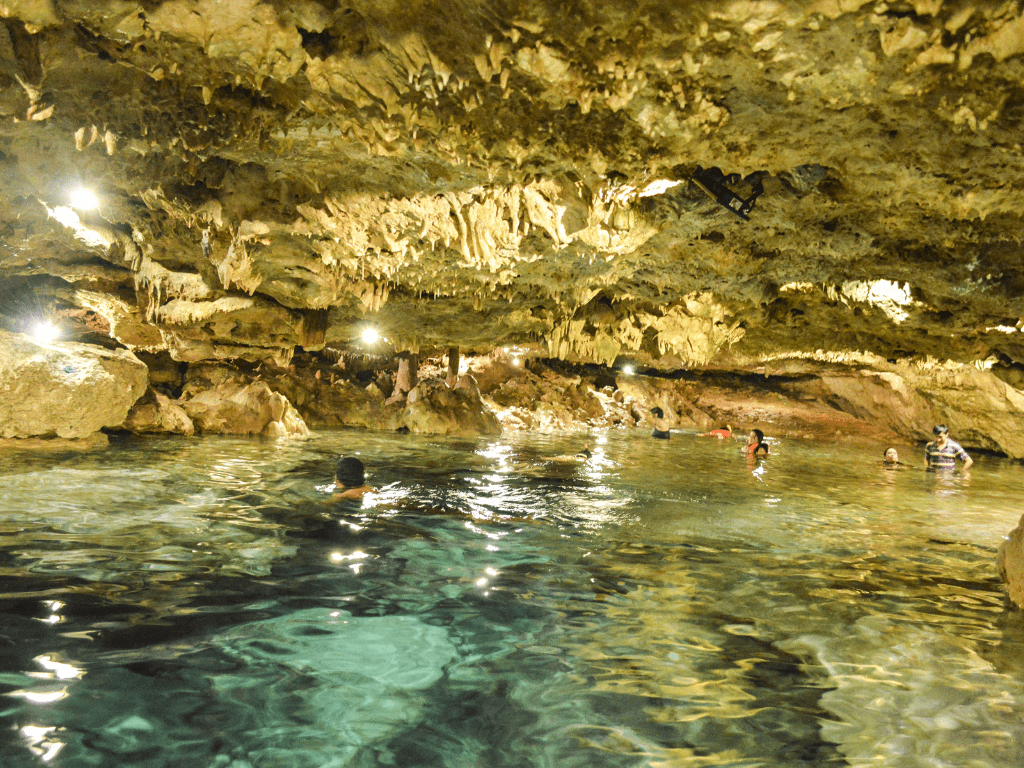
This article will delve into the mesmerizing world of cenotes, exploring their geological formation, cultural significance, biodiversity, and recreational activities they offer. We will begin by examining the geological origins of cenotes, highlighting the karst topography unique to the Yucatan Peninsula and its role in shaping these remarkable formations. Moving on, we will explore how cenotes held profound importance in ancient Maya culture and played a crucial role in their mythology and cosmology.
In addition to their cultural significance, we will uncover the ecological marvels hidden within cenote ecosystems. From endemic species adapted to low light conditions to delicate flora that thrives along their limestone walls, we will discover a fascinating array of life forms that have evolved uniquely within this aquatic environment.
We will delve into the recreational activities that attract visitors from around the world to experience the enchantment of Yucatan’s cenotes. Whether snorkeling or diving in pristine waters with exceptional visibility or simply immersing oneself in the serenity of these natural wonders, there is no shortage of ways to appreciate and enjoy these captivating landmarks.
Geological Formation of Cenotes
Explaining Karst Topography: Nature’s Sculptor
The mesmerizing allure of cenotes begins with the unique geological process that shapes them – karst topography. Karst landscapes are formed in regions where soluble rocks, such as limestone, dissolve over time due to the chemical reaction between rainwater and carbon dioxide present in the air. This gradual dissolution creates a distinctive landscape characterized by sinkholes, underground rivers, and caves.
The Yucatan Peninsula’s geology is predominantly composed of limestone, making it an ideal canvas for nature’s sculptor. Through a slow but relentless process lasting thousands of years, rainwater seeps into the soil and penetrates through fractures in the limestone bedrock.
As it filters down into these underground channels known as karst aquifers, it erodes away at the rock over time. The resulting network of subterranean passages can span vast distances beneath the surface.
The Role of Limestone Bedrock: Carving Subterranean Wonders
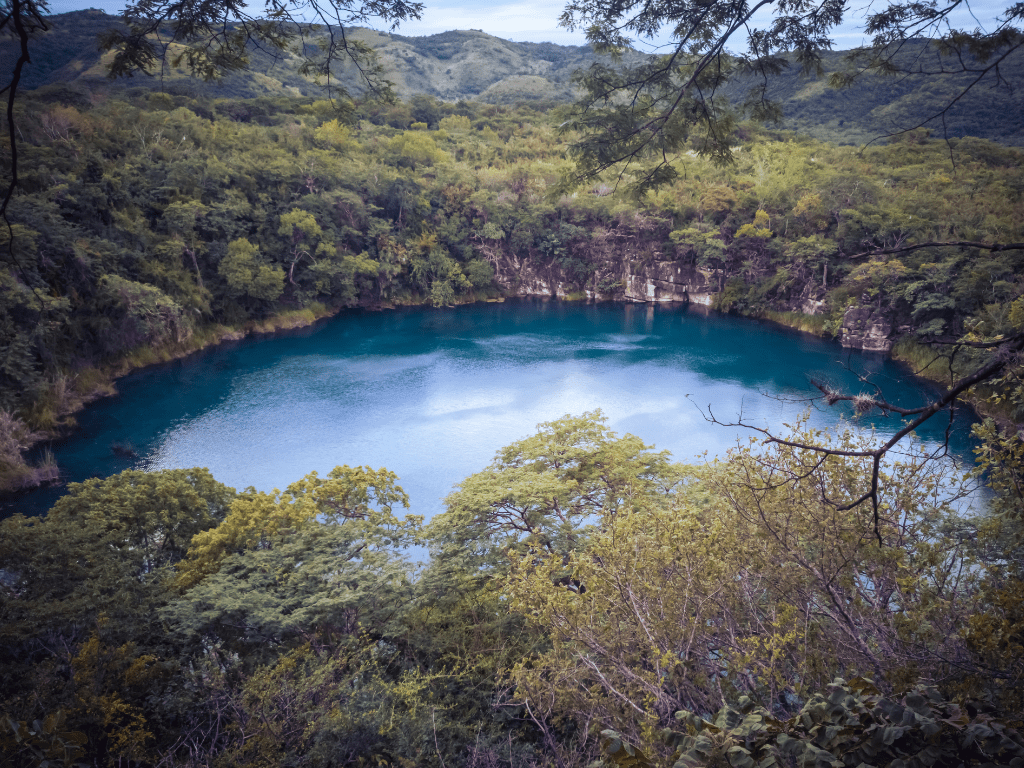
Limestone plays a pivotal role in creating cenotes due to its solubility in water. Its chemical composition allows for rainwater to infiltrate through cracks and fractures, gradually dissolving away portions of rock and carving out extensive underground cavities.
Over millions of years, these cavities can enlarge enough to cause sections of the ground above to collapse inward, forming what is known as a collapsed cenote. Apart from collapsed cenotes that create surface-level sinkholes or dolines, there are also semi-open and underground cenotes.
Semi-open cenotes occur when partial cave ceilings collapse or erode away enough to expose an opening while still maintaining some coverage overhead. Underground or cavern cenotes are entirely enclosed within cave systems or tunnels.
Different Types of Cenotes: A Wonderfully Diverse Landscape
Cenotes exhibit a diverse range of shapes and characteristics based on their formation process. Collapsed cenotes, often referred to as cenotes abiertos (open cenotes), are characterized by their exposed surface-level sinkholes that provide direct access to the pristine waters below. These open-air oases are often surrounded by lush vegetation, making them enchanting places to explore.
Semi-open cenotes possess an otherworldly charm, with partially collapsed ceilings allowing streaks of sunlight to illuminate the crystal-clear waters within. These cenotes offer a unique combination of open-air and underground environments, providing a remarkable setting for snorkelers and divers alike.
Underground or cavern cenotes are concealed entirely within caves or subterranean systems. Accessible through narrow passageways, these hidden gems unveil a surreal underworld of intricate rock formations illuminated by ethereal beams of natural light cascading from above.
From collapsed sinkholes to semi-open wonders and subterranean marvels, the diverse range of cenote types offers an unparalleled experience in exploring the geological wonders shaped by karst topography. Understanding the formation process behind these captivating features enriches our appreciation for their beauty and significance in Yucatan’s natural landscape.
The Cultural Significance of Cenotes

Unveiling the Mysteries of Ancient Mayan Civilization
The cenotes in the Yucatan Peninsula hold profound historical importance, particularly for the ancient Mayan civilization that thrived in this region. For the Mayans, cenotes were not merely natural sinkholes or water sources; they were regarded as sacred sites deeply intertwined with their religious beliefs, rituals, and cosmology.
These mystical underground formations represented portals to the underworld and were believed to be inhabited by powerful deities. The significance of cenotes can be witnessed through their prominent role in ancient Mayan culture.
Cenotes: Sacred Sites for Rituals and Ceremonies
Cenotes served as vital locations for various rituals and ceremonies performed by the ancient Mayans. They were considered to be sacred places where connections could be established between humans and the divine realms.
The spiritual significance attributed to cenotes stemmed from their association with water, a life-giving element symbolizing purification and regeneration. One notable ritual held at cenotes was known as “the descent of Chaac,” referring to the rain god in Mayan mythology.
During times of drought or agricultural cycles, this ceremony was conducted to invoke Chaac’s blessings and ensure a bountiful harvest. Participants would gather at a designated cenote, adorned in ceremonial attire, where offerings such as jade artifacts, pottery vessels filled with food, and even human sacrifices would be made.
The Connection Between Cenotes and Mayan Mythology/Cosmology
The profound connection between cenotes and Mayan mythology can be observed through various legends that have been passed down through generations. In Mayan cosmology, these natural sinkholes were believed to be entrances leading into Xibalba – the mythical underworld inhabited by gods, spirits, and supernatural beings.
One such legend is the story of the Hero Twins, Hunahpu and Xbalanque, who descended into Xibalba to confront the deities residing there. It is said that these brave twins utilized a cenote as their gateway to embark on their perilous journey.
This mythological tale highlights the belief in cenotes as enigmatic passageways connecting the mortal realm with divine dimensions. Cenotes in the Yucatan Peninsula hold immense cultural significance due to their historical importance to the ancient Mayan civilization.
These captivating sinkholes were not only revered as sacred sites for rituals and ceremonies but also held deep connections within Mayan mythology and cosmology. The mystical allure of cenotes continues to fascinate us today, offering a glimpse into the profound spiritual beliefs and practices of one of the world’s most remarkable ancient civilizations.
Unique Flora and Fauna in Cenote Ecosystems
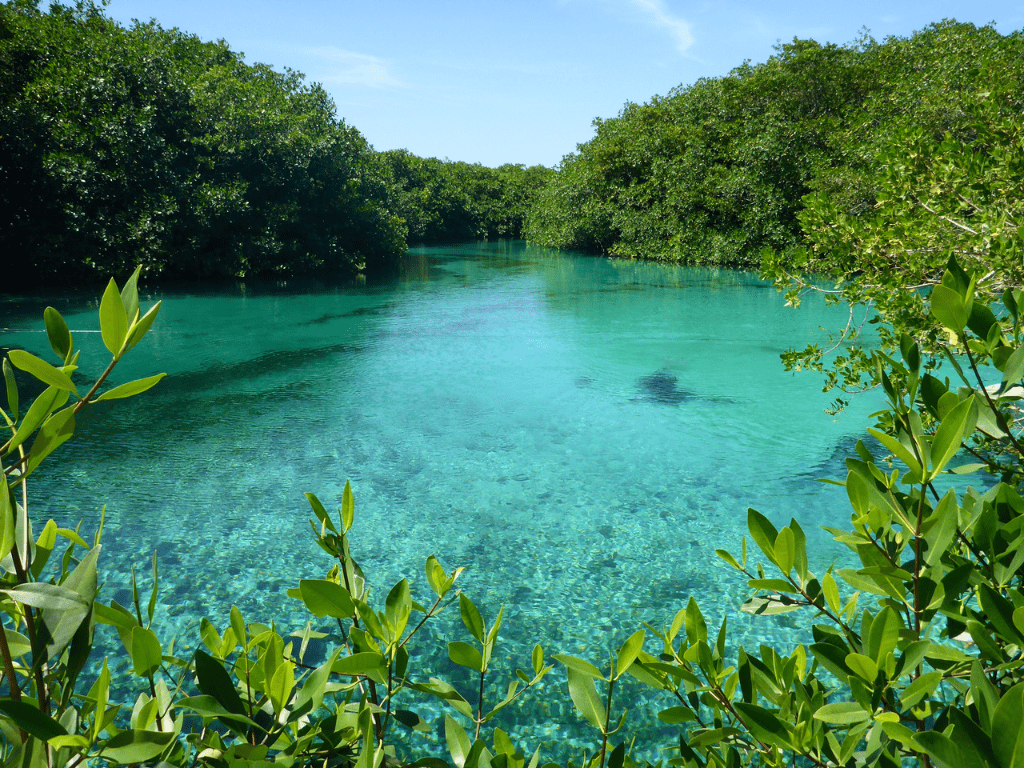
Cenotes in the Yucatan Peninsula are not only striking natural formations but also home to a remarkable array of unique flora and fauna. These underground ecosystems harbor a diversity of species that have adapted to the challenging conditions of low light, limited resources, and the fluctuating water levels typical of cenotes.
Within the cenote’s dark recesses, one can find an array of fascinating aquatic plants. These include submerged grasses such as Vallisneria sp., which thrive in the serene waters.
The roots of these plants provide essential habitats for small invertebrates like freshwater shrimp and snails, which play a vital role in maintaining the balance of this delicate ecosystem. The cenote walls often offer a vertical canvas for epiphytic plants to flourish.
Orchids, bromeliads, and ferns festoon these limestone cliffs, their roots clinging tenaciously to any available crevice or ledge. These aerial gardens add an enchanting touch to the already surreal environment found within cenotes.
Adaptations of Aquatic Species to Low Light Conditions
In these light-deprived environments, aquatic species have developed fascinating adaptations to survive and thrive. One striking example is the eyeless catfish (order: Siluriformes), aptly named due to its lack of functional eyes.
Over time, these fish have evolved to rely on other sensory structures, such as taste buds on their skin and barbels projecting from their mouths, allowing them to navigate through the darkness by detecting chemical cues. Another intriguing adaptation is seen in certain species of blind cave shrimp (genus: Typhlatya).
These tiny crustaceans possess elongated appendages known as antennae or antennules that function as highly sensitive chemosensory organs. These specialized structures enable them to detect changes in water chemistry, locate food sources, and communicate with other members of their species in the pitch-black cenote environment.
Furthermore, many fish species dwelling in cenotes exhibit a paler pigmentation or even transparent bodies, enabling them to blend seamlessly into their surroundings. This camouflage provides an advantage by reducing their visibility to potential predators and increasing their chances of surprising prey.
Endemic Species Exclusive to Cenote Environments
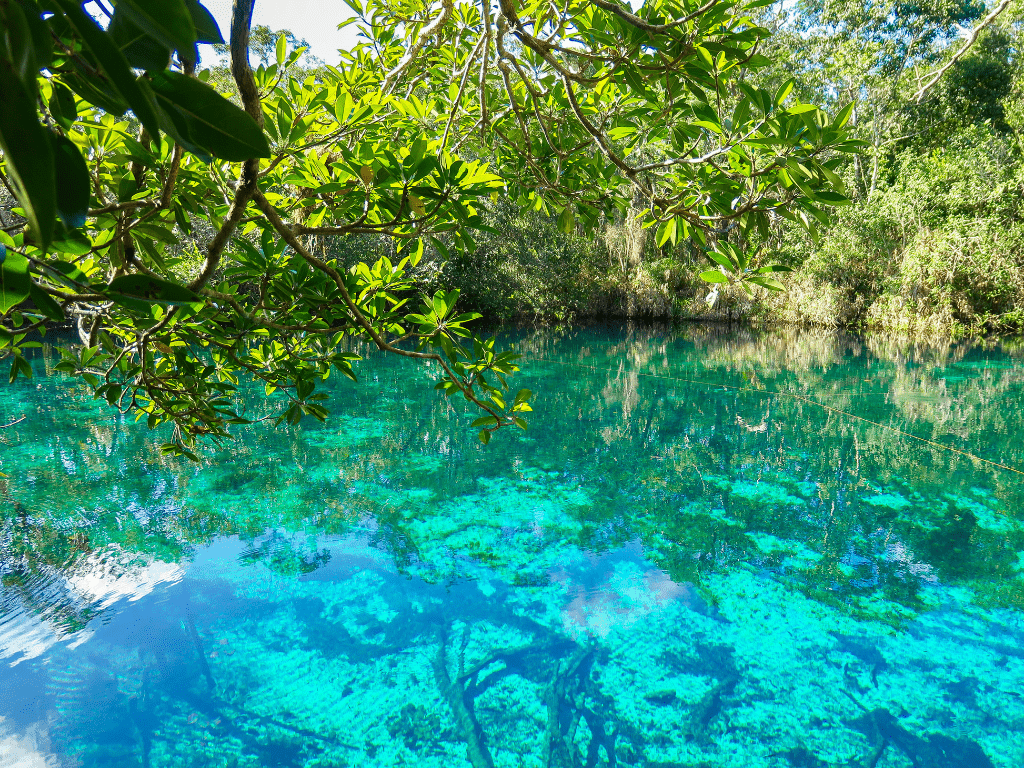
Cenotes serve as refuge for numerous endemic species that are found exclusively within these unique ecosystems. One such example is the critically endangered Yucatan blind cavefish (Semiophorus mexicanus), a remarkable creature that has adapted to complete darkness by losing its eyesight entirely and developing elongated sensory papillae on its head.
Additionally, the cenote ring-tailed catfish (Sciades parkeri) is endemic to cenote systems in the Yucatan Peninsula. This striking catfish species displays a semi-transparent body with distinct black stripes running along its length.
Its unique morphology allows it to navigate through narrow cave passages and feed on small invertebrates that reside within the cracks and crevices of cenote walls. These examples highlight the incredible biodiversity that can be found within cenotes, where each species has meticulously evolved over time to adapt and thrive in an environment unlike any other on Earth.
Recreational Activities in Cenotes
Snorkeling and Diving Opportunities for Visitors
Immersing oneself in the captivating world of cenotes through snorkeling and diving is a truly exceptional experience. With their pristine waters, these natural sinkholes provide an unparalleled opportunity for exploring underwater marvels. Snorkelers can leisurely navigate the surface, gazing down into the depths below, while divers can delve deeper into the hidden realms and discover remarkable formations.
Cenotes offer a wide range of snorkeling and diving sites suitable for enthusiasts of all skill levels. Shimmering with crystal-clear waters, many cenotes boast astounding visibility that can exceed 30 meters (100 feet).
This astonishing clarity allows snorkelers to relish in an enchanting panorama of stalactites, stalagmites, and submerged limestone formations that appear like ethereal sculptures beneath the water’s surface. For avid divers, cenotes present an enthralling labyrinth of tunnels and submerged caves to explore, unveiling secrets that have remained hidden for centuries.
Crystal-Clear Waters Providing Excellent Visibility for Underwater Exploration
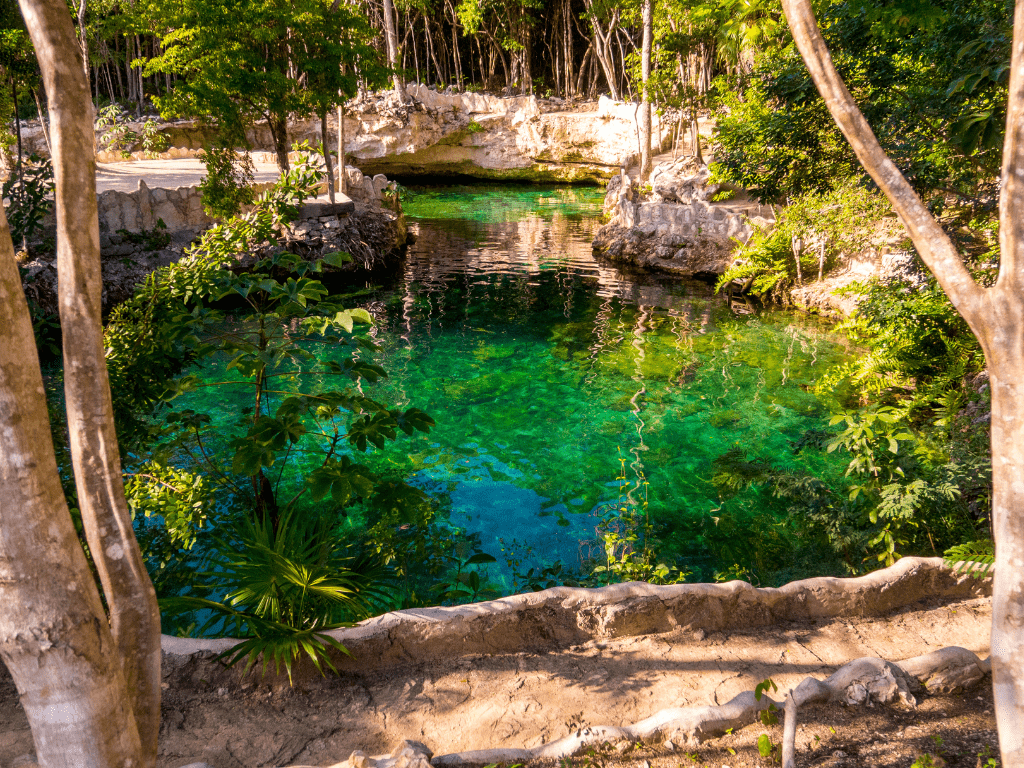
The pristine nature of cenote waters is due to their unique filtration process. Rainwater percolates through the porous limestone bedrock over time before filling these natural reservoirs with incredibly pure water. As a result, snorkelers and divers are rewarded with unmatched visibility unparalleled by most other dive sites around the world.
When venturing beneath the surface of a cenote, one is greeted by an awe-inspiring clarity that allows every intricate detail to be observed with remarkable precision. Sunbeams penetrate through openings or skylights above, casting ethereal rays onto underwater rock formations adorned with delicate algae and vibrant aquatic plants.
The hues that dance within this aquatic realm are stunningly vivid against the backdrop of light filtering through the translucent water – a true feast for the eyes. Moreover, the visibility within cenotes creates an exceptional sense of tranquility, as divers glide effortlessly through this astonishing aquatic world.
Conclusion
As we emerge from the depths of our exploration of cenotes in the Yucatan Peninsula, we are left awe-struck by the sheer beauty and wonder that they offer. The recreational activities available in these natural sinkholes, such as snorkeling and diving, provide an opportunity for individuals to connect intimately with nature’s hidden treasures.
With their crystal-clear waters and extraordinary visibility, cenotes transport visitors into a realm where submerged limestone formations become works of art. Engaging in snorkeling or diving adventures in cenotes not only allows us to appreciate the remarkable geological formations but also grants us a glimpse into the rich biodiversity that thrives within these unique ecosystems.
The experience leaves us with a profound respect for nature’s ability to create such ethereal landscapes. Let us be inspired by the resilience and beauty found within cenotes and carry this appreciation with us as we continue to explore and protect our planet’s most precious natural wonders.
